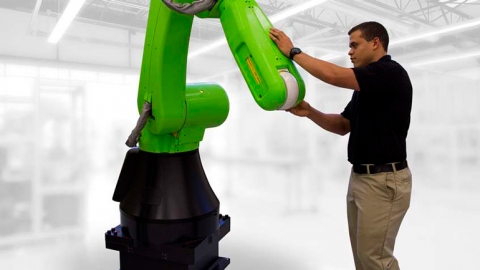Is Collaborative Robot and Worker Safety Possible?
Humans are working in closer proximity to robots than ever before thanks to advances in safety technologies. New standardizations offer guidance on how to achieve safer collaborative work environments to revolutionize productivity and safety in industrial operations.
Due to the advances in sensing technology and motion systems, collaborative robotic applications are changing the way people and machines interact on the plant floor. This collaboration allows manufacturers and industrial operators to combine best practices of robotic systems, such as the strength and repeatability of machines, with the flexibility, adaptability, and intelligence of humans.
The result is a collaborative work environment that enhances production efficiency and flexibility, while also reducing the physical burden on humans. These advances in robotic systems are increasingly important as companies seek new ways to retain their skilled but aging workforce.
One of the key enablers of collaborative robotic applications is the safety technology that allows humans and robots to share the same workspace with less risk of human injury. Advanced safety technology is increasingly embedded in the robot and in the cell controller. Sophisticated sensors, safety controllers, and communication networks provide real-time safety data that allows robots to automatically respond to potential incidents (such as coming into contact with an operator) and reducing the need for safety cages (freeing floor space, saving money, and increasing flexibility in the way robots are used on the plant floor).
Today’s standards—provided by the Robotic Industries Association and various safety standards bodies—offer guidance on how robots and humans can work together to revolutionize productivity and safety in industrial operations.
...




